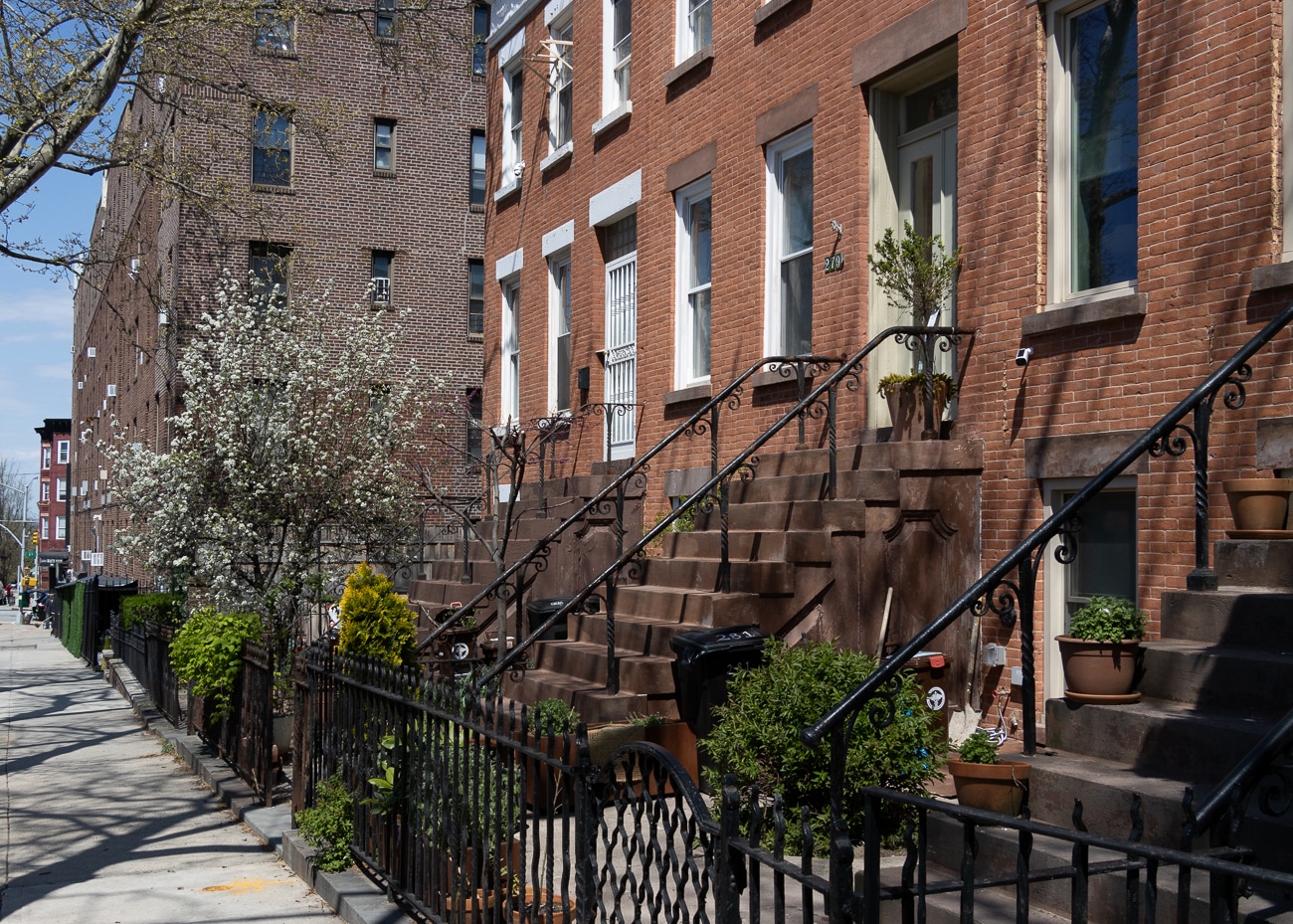Building of the Day: 305 Decatur Street
Brooklyn, one building at a time. Name: Apartment Building Address: 305 Decatur Street Cross Streets: Corner of Stuyvesant Avenue Neighborhood: Stuyvesant Heights Year Built: 1893-1894 Architectural Style: Arts & Crafts, with Moorish/Spanish details Architect: Col. E.F. Gaylor, perhaps his father or brother Landmarked: No, but in the calendared Stuyvesant Heights expansion district The story: By…

Brooklyn, one building at a time.
Name: Apartment Building
Address: 305 Decatur Street
Cross Streets: Corner of Stuyvesant Avenue
Neighborhood: Stuyvesant Heights
Year Built: 1893-1894
Architectural Style: Arts & Crafts, with Moorish/Spanish details
Architect: Col. E.F. Gaylor, perhaps his father or brother
Landmarked: No, but in the calendared Stuyvesant Heights expansion district
The story: By the end of the 19th century, Stuyvesant Heights was being developed as an upscale, upper middle-class neighborhood. This end of Stuyvesant Avenue was part of the holdings of the Prosser family, who had several family mansions not far from here. They were the very wealthy American representatives for the Krupp Steel Works, based in Germany. Over the course of the previous sixty years they had acquired much of the land in the area, and by the end of the century they had started to sell it off. The developers who bought were interested in marketing to a well-off crowd and built elegant townhouses on Stuyvesant, Bainbridge, Decatur, MacDonough and the other surrounding blocks. Some of them also began to build apartment buildings, anticipating that there would be a market for upscale flats. This building was one of largest of these apartment buildings.
According to the Real Estate Record and Builder’s Guide, the trade bible of New York City building, construction on the structure had been begun in 1893 with plans and execution by Colonel Edward. F. Gaylor. The Colonel was a fascinating character. He was the long-time commander of Brooklyn’s 47th Regiment whose headquarters was the armory in Williamsburg. By all accounts he was a successful commander, but was universally hated by just about everyone, especially his peers. He patronized and ignored his officers and was despised by his associates. In one particularly rancorous exchange a fellow colonel asked him if he was grateful to his men for having made his regiment a success, to which he replied, “I am grateful to nobody. I have made the regiment what it is, and I don’t propose to have anyone else take credit for it…I am the 47th Regiment.” I’ll have to come back to him, his story begs for more detail.
At any rate, by 1891 Gaylor was kicked out of his command of the regiment and was arrested at least once. He must have decided that real estate was a better career and he acquired this plot. From the Guide, it appears that he started the building in 1893 and had to abandon the project for a year. They don’t give a reason, but an article in the Brooklyn Eagle may offer a clue. That year the Colonel was found drunk and passed out in the street nearby. He was arrested for public intoxication and only then was he recognized and sent home to Katonah, NY. He might have needed the time to get himself together.
His apartment building was actually pretty ahead of its time in function. The Guide describes a, “H” shaped building on a 100 foot square lot, with a central court 40 x 40 feet in size. The building originally housed 24 families, and was of “Moorish, Swiss and Spanish styles of architecture.” The interiors were “of the latest ideas of style and finish, including steam heat, electric light, two electric elevators, etc. The basement will contain four steam laundries for tenants, billiard rooms and bowling alleys. The cost will be about $200,000.”
The result was a bit of an odd looking, bulky building, sort of Arts & Crafts air-kisses Spain, but it soon filled up with pretty well-to-do tenants. The local papers over the next twenty years list tenants who were part of the social register, an assistant district attorney, Miss Alice Allen, a teacher at Packer, and a man named Arthur Fowell, who was the editor of Puck Magazine, in 1912. That year there were a number of break-ins in the area, and Mr. Fowell was one of the victims.
One of the other more interesting tenants was William G. Bigger, who died here in 1936. At that time he was the oldest commercial printer in Brooklyn, at the age of 86. The paper said that he was still going to work at his plant on Atlantic Avenue every day, up until the week before he died of a heart attack. He had been a printer for 72 years, and worked for 30 years at the famous DeVinne Press, in Manhattan. In his full life, he had seen it all; he was a 13 year old apprentice, handing out posters at the beginning of the Civil War. He had witnessed the Draft Riots, and had been on the street when the bier of President Lincoln passed through New York City. Mr. Bigger was buried in Cypress Hills Cemetery.
Today, 305 Decatur appears to be in decent shape, although it has the look of a building being “saved” for better things. I don’t think the colonel was the architect, but there is no other architect mentioned. Who knows, maybe he had many talents. To be honest, it’s not the most beautiful apartment building around. According to Property Shark, it now has 32 apartments, and was purchased in 2007 for over $8,500,000. I bet there plans afoot here. GMAP
Update: I just found an article that says that Gaylor’s father and brother were architects and builders in Brooklyn. Perhaps it ran in the family after all.
(Photograph: Christopher Bride for Property Shark)











What's Your Take? Leave a Comment